See Things Differently
What is this?
A card-based activity that enables learning about visual associations
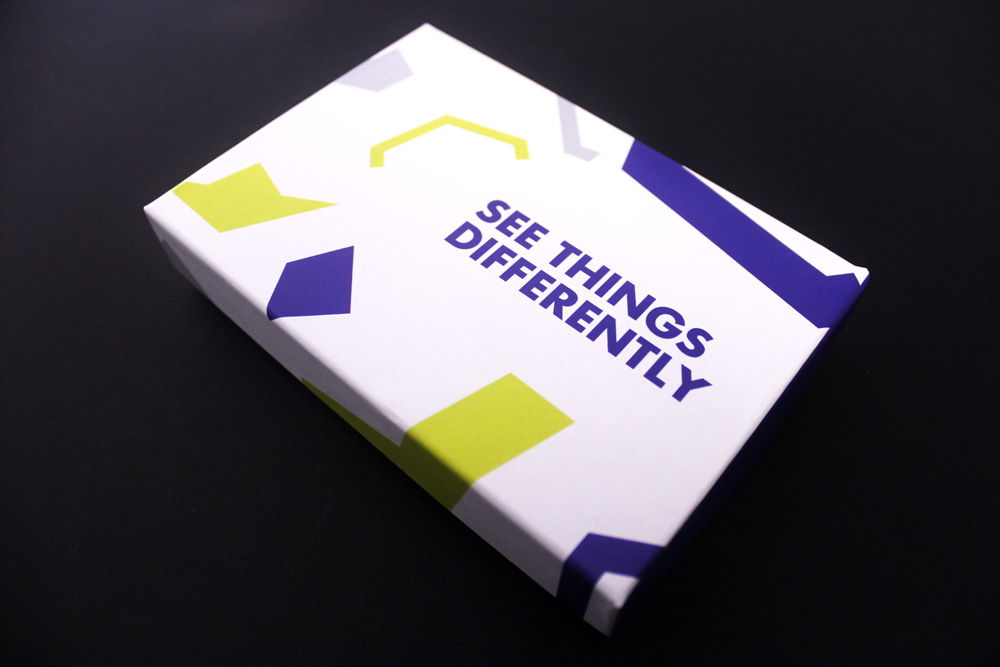 See Things Differently is an educational project for “Interactive Design and Media Application” at the Savannah College of Art & Design. Originally conceived as a game similar to Cards Against Humanity, See Things Differently is focused on having participants learning how others interpret visual objects like photographs, symbols, and art.
See Things Differently is an educational project for “Interactive Design and Media Application” at the Savannah College of Art & Design. Originally conceived as a game similar to Cards Against Humanity, See Things Differently is focused on having participants learning how others interpret visual objects like photographs, symbols, and art.I sought to create an interactive project that would teach the complex topic of semiotics in an approachable way. For this reason, I envision this tool being useful for UX researchers, marketers, and ethnographers while studying groups of people.
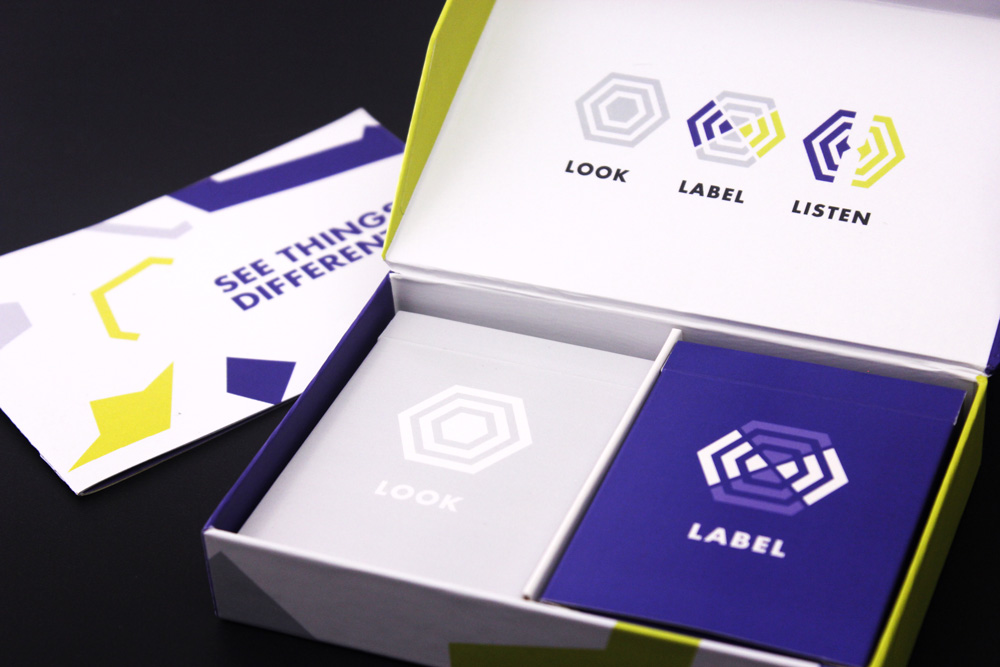
DESIGN
Interaction design changes that allow for social learning of semiotics while reducing self-centered competition
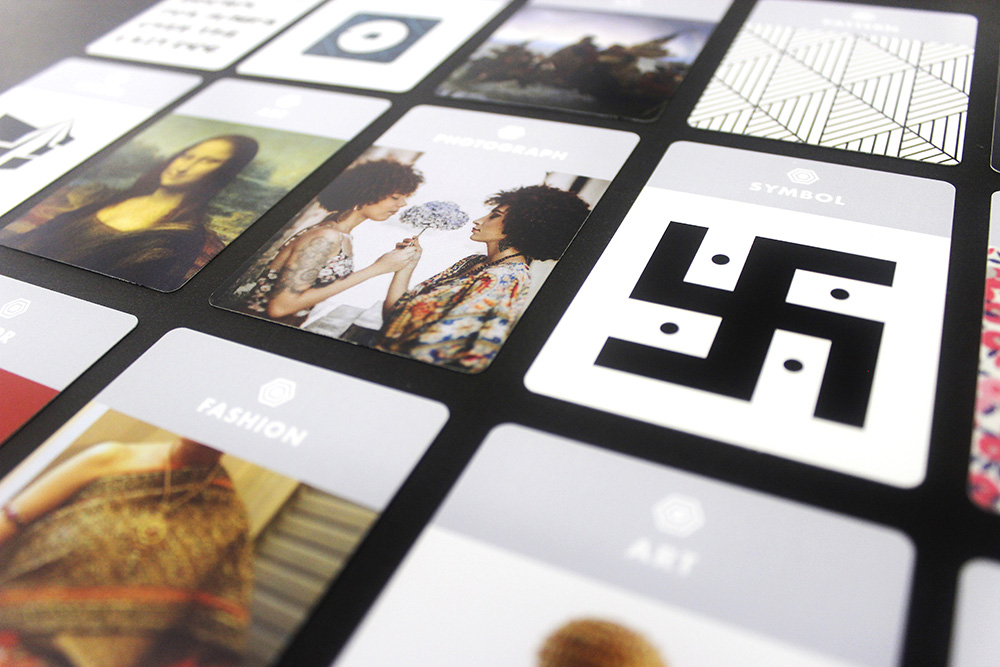

Left: Look Deck Cards / Right: Label Deck Cards
In general, the rules of See Things Differently closely resembles that of Cards Against Humanity and Apples to Apples. However, there are differences that better serve the purpose of being an educational game. A basic round has a decider who flips over a card from the “Look” deck. This deck includes visual imagery such as photography, art, typefaces, fashion, and abstract symbols. In response to this Look card, the other players pick from their hand of “Describe” cards. These cards all contain an adjective such as chaotic, feminine, or modern. Each player selects the Describe card that they personally feel matches the Look card the best.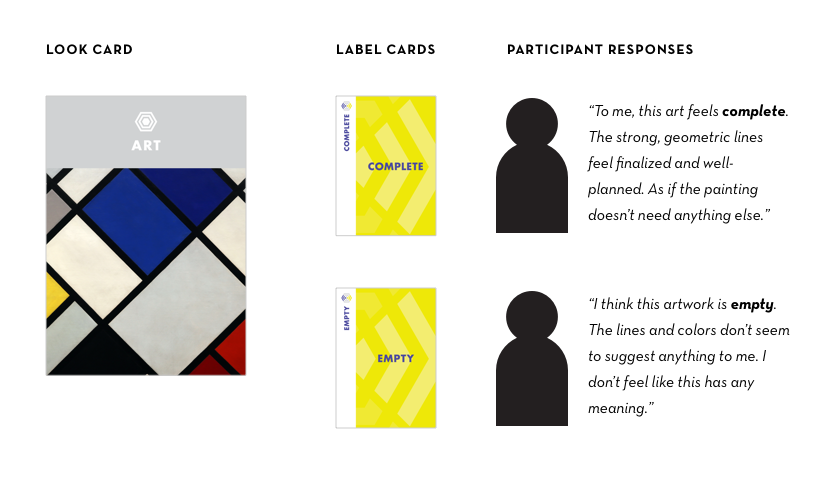
Example of two participant's card choices and responses. Both valid, but conflicting interpretations of the same artpiece.
Where the rules differ from the aforementioned games is an emphasis on rationale and explaining one’s choice to the greater group. The Decider picks from the selection of Look cards and explains why. After this, every single player explains their card choice. This allows the emergence of differing perspectives, so each person can learn from each other about how they interpret visual objects.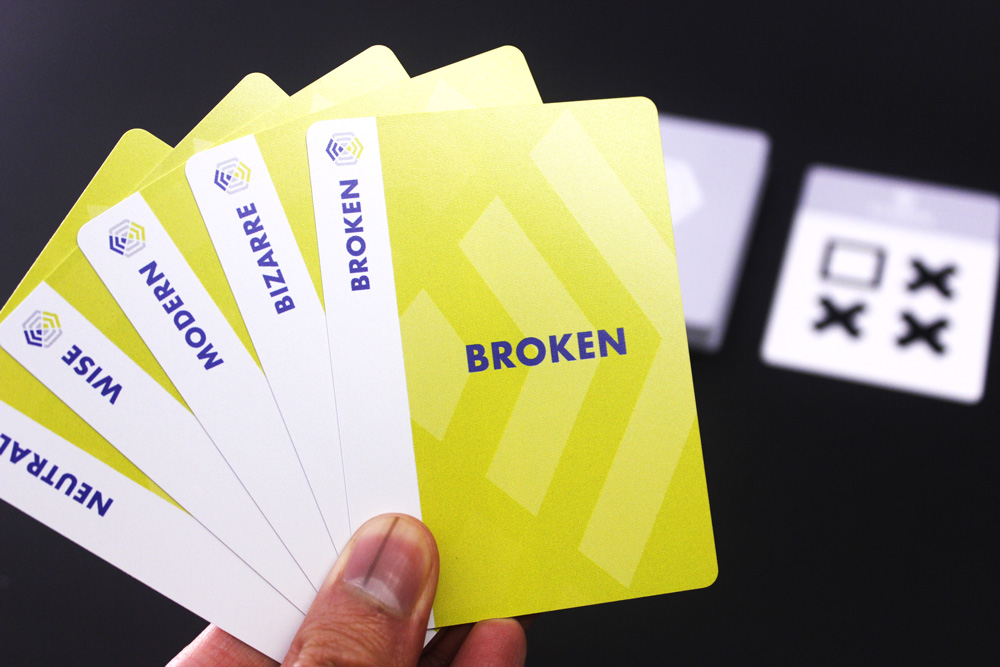 Even if a player has a bad hand of cards, they are should choose a card even if it is suboptimal. This results in the player considering a perspective that they normally wouldn’t have thought of. And by having to explain this perspective, they must think in greater detail about why the card may be valid rather than simply tossing a card in for the sake of tossing a card.
Even if a player has a bad hand of cards, they are should choose a card even if it is suboptimal. This results in the player considering a perspective that they normally wouldn’t have thought of. And by having to explain this perspective, they must think in greater detail about why the card may be valid rather than simply tossing a card in for the sake of tossing a card.So while this has game-like rules, this tool is not a game at all. There is no win-condition, there are no points, and there’s not really a reason for players to compete with other players. The purpose of this activity is to be able to learn from each other. If the incentives were set up so that each player strives to “win,” they would be more concerned about their individual performance and be less open to the perspectives of others. Thereby, defeating the purpose of being a socially-minded educational tool.

Sample flow of a single round of play
VISUAL
Color palette, iconography and physical form help to communicate the activity and its meaning
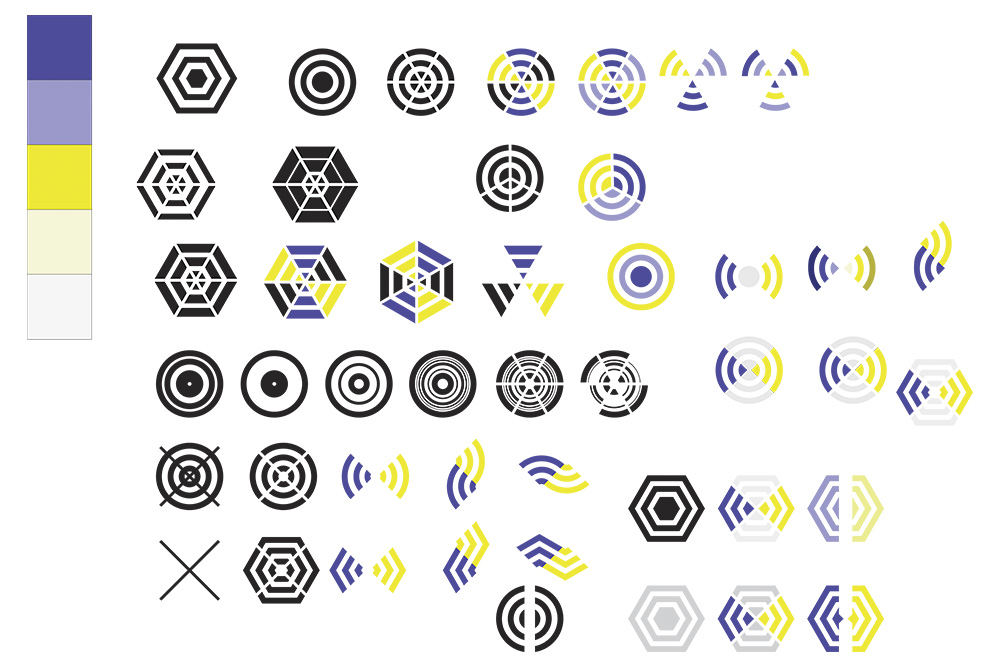
Color and iconography exploration based around color blindness and concentric shapes
Although the visual design was not my original focus during my first run with this project, I did get the opportunity to better realize the graphic and physical design months later. Firstly, I decided to use a color palette that referenced a form of color blindness called "deuteranopia." In varying degrees, this results in a color palette of indigos and yellows. This reflects the project's emphasis on bringing forth uncommon perspectives.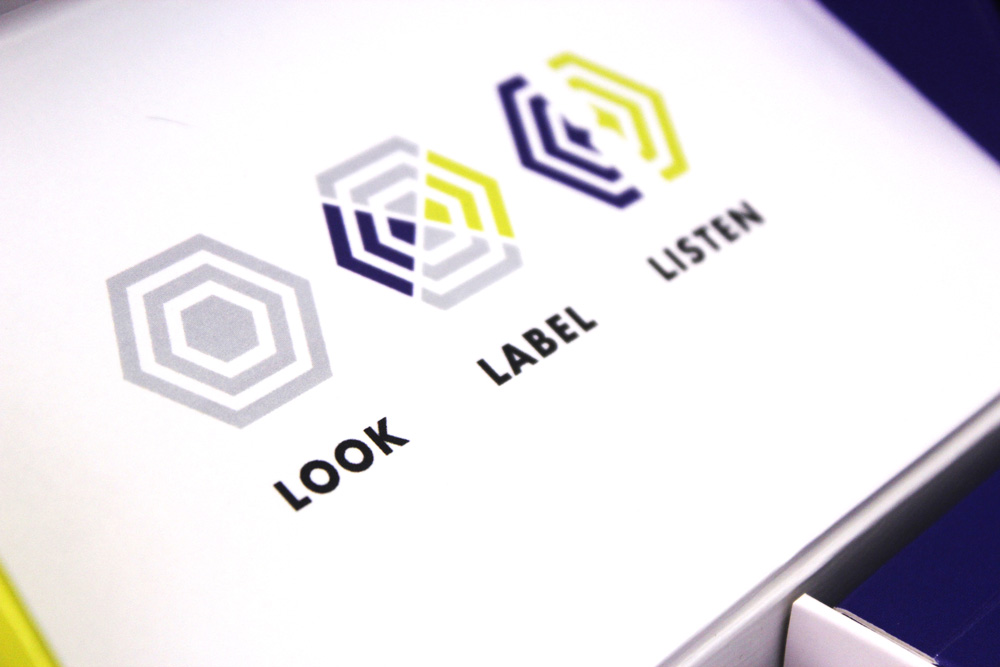 Further into the project I became inspired by concentric hexagons. Playing around with this form, I created three different icons that represent the three different stages of this tool: Look, Label, Listen. "Look" being represented by an eye. "Label" represented by a two soundwaves extending outward in opposite directions. And finally, "Listen" which is represented by two different ears.
Further into the project I became inspired by concentric hexagons. Playing around with this form, I created three different icons that represent the three different stages of this tool: Look, Label, Listen. "Look" being represented by an eye. "Label" represented by a two soundwaves extending outward in opposite directions. And finally, "Listen" which is represented by two different ears.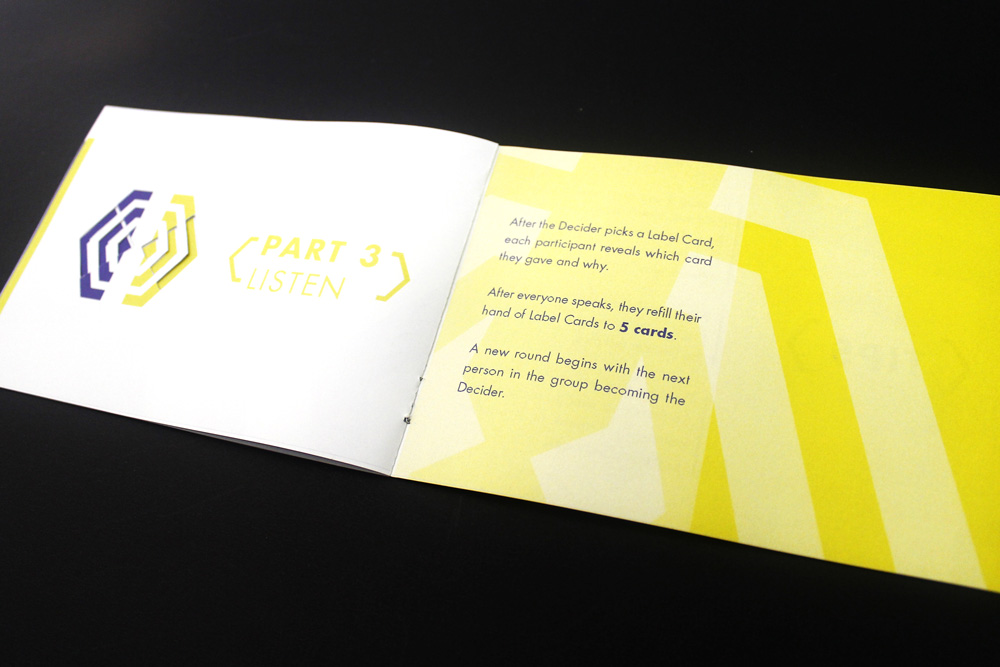
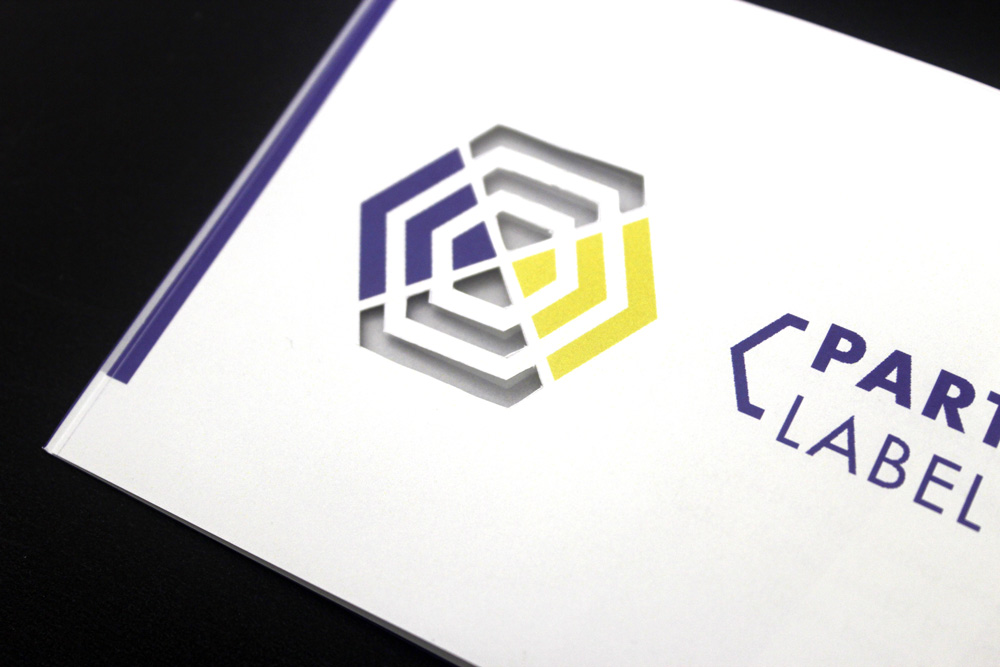
Cut-outs in the instruction manual
With regard to the physical form, I believed that the necessary elements besides the cards themselves were a box and an instruction manual. The box could house both decks of cards and the manual in one complete package. The manual not only served to state the rules but also included cut-outs so that the iconography can build upon one another as a person turns the pages
USER TESTING
Seeing how people acted under rule variants revealed changes were necessary to make the activity feel more open
Many design decisions were brought about through playtesting this pseudo-game. Prior to playtesting, I came up with several rule variations. Some rules included using different voting procedures, some included tokens, some included modifier cards that altered the rules each round. However, testing would reveal very specific things about people’s behavior when confronted with different rules. Rules variants that included democratic style voting or some kind of point system caused participants to feel more guarded. They would feel more defensive about their own card choices and worry about what the Decider would choose. Rather than make honest card picks that truly reflected their personal point of view.
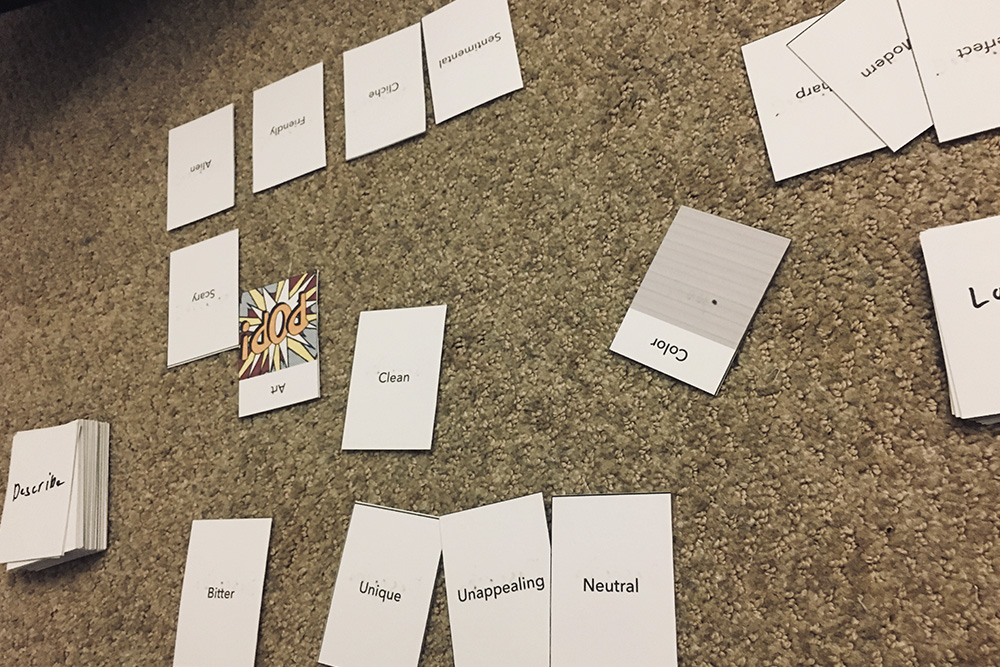
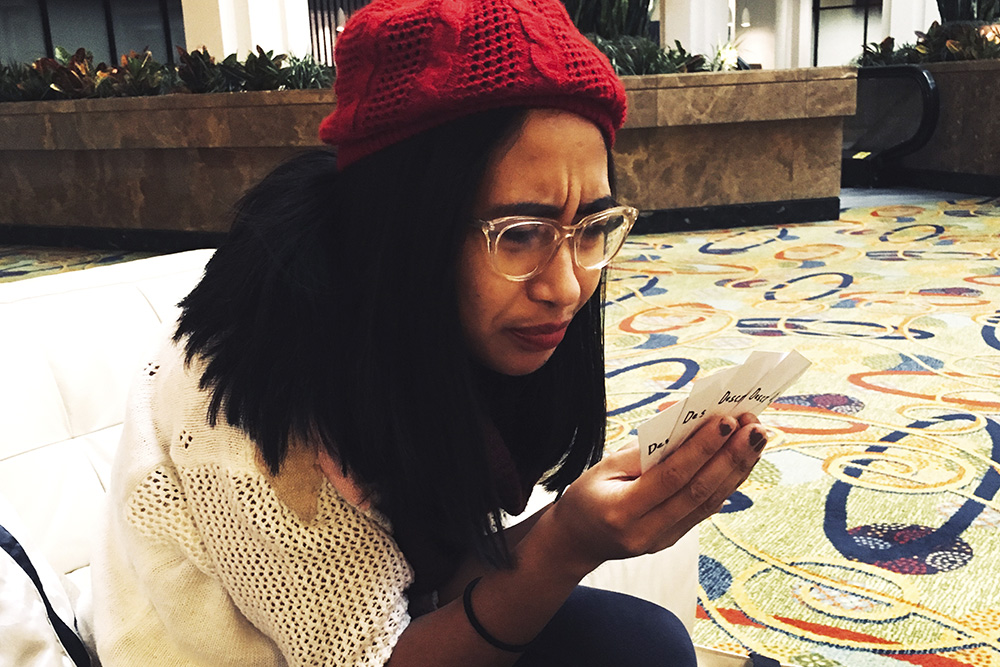
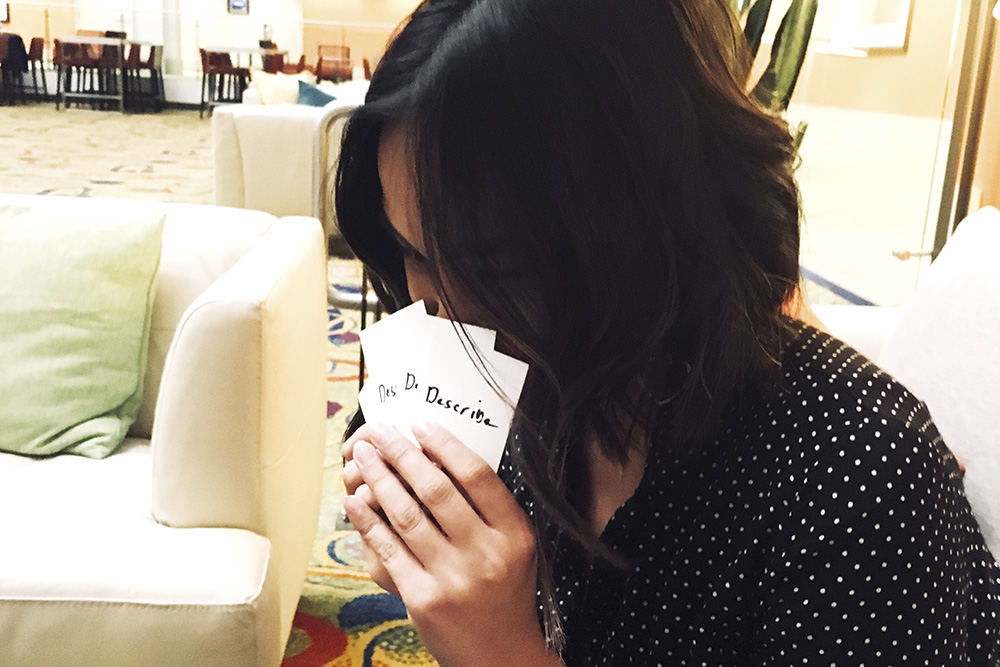

Initial testing prototype
The concept of explaining one’s card also underwent thought and iterations. One thing that I had not considered originally is the social pressure of explaining one’s card choice. Even if I removed the competitive aspect of this tool, there are still expectations that can cause anxiety. When people had to give explanations before the Decider made their choice, people who were simply better at persuasion would get their card chosen. For this reason, those who were less confident in their communication would more often lose out. In addition, those who explained their choice last were at a general advantage, being able to counter others. This created a scenario where some participants felt less open about their perspective, hindering the purpose of the game.

Testers included a Justine, a creative education teacher and Donna, a graphic designer
One crucial suggestion by one participant was to change the order of the actions. Instead of players explaining their card choice before the Decider picks, this participant suggested that people explain afterward. This allowed for a less critical atmosphere where participants feel freer to communicate without worrying about being persuasive and “winning.”
Effect
Seeing how people acted under rule variants revealed changes were necessary to make the activity feel more open
One of my big takeaways from this project was considering the effect interactive design can have on people. Sure, one can spell out the rules or functionality of a design, but those can only go so far in how it will change people’s behaviors and moods. Especially when people are unpredictable and will react to a design in unintended ways. This underlines the importance of testing because no matter how deeply I think about my design choices, they can all burst into flames once presented to a real audience.
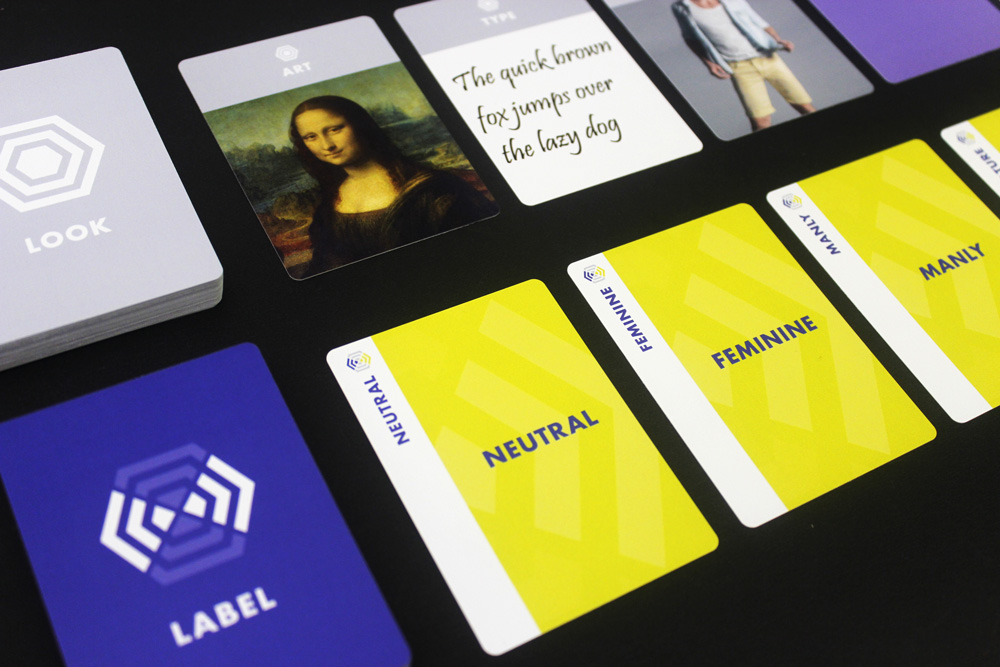 See Things Differently is, on paper, a very simple tool. However, as I’ve shown, there are very nuanced ways that the different rule sets can either create a pressured environment or an open one suitable for learning. My goal for this project was to promote understanding among individuals and all my choices needed to support that.
See Things Differently is, on paper, a very simple tool. However, as I’ve shown, there are very nuanced ways that the different rule sets can either create a pressured environment or an open one suitable for learning. My goal for this project was to promote understanding among individuals and all my choices needed to support that.
I’m reminded of how friendships can be absolutely broken through a game like Monopoly. Because of this, it’s become extremely apparent to me that I should consider not just how design affects people but also a larger culture. While it’s important to create objects that make money or serve a need, I have to ask myself “Is this thing actually going to be harmful to people?”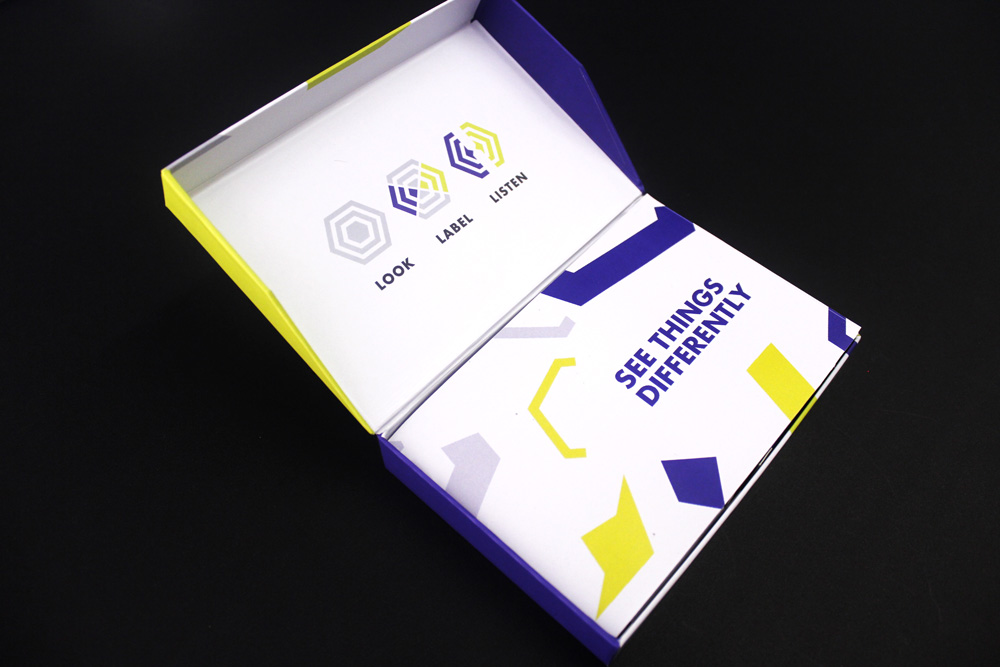
 See Things Differently is, on paper, a very simple tool. However, as I’ve shown, there are very nuanced ways that the different rule sets can either create a pressured environment or an open one suitable for learning. My goal for this project was to promote understanding among individuals and all my choices needed to support that.
See Things Differently is, on paper, a very simple tool. However, as I’ve shown, there are very nuanced ways that the different rule sets can either create a pressured environment or an open one suitable for learning. My goal for this project was to promote understanding among individuals and all my choices needed to support that.I’m reminded of how friendships can be absolutely broken through a game like Monopoly. Because of this, it’s become extremely apparent to me that I should consider not just how design affects people but also a larger culture. While it’s important to create objects that make money or serve a need, I have to ask myself “Is this thing actually going to be harmful to people?”
